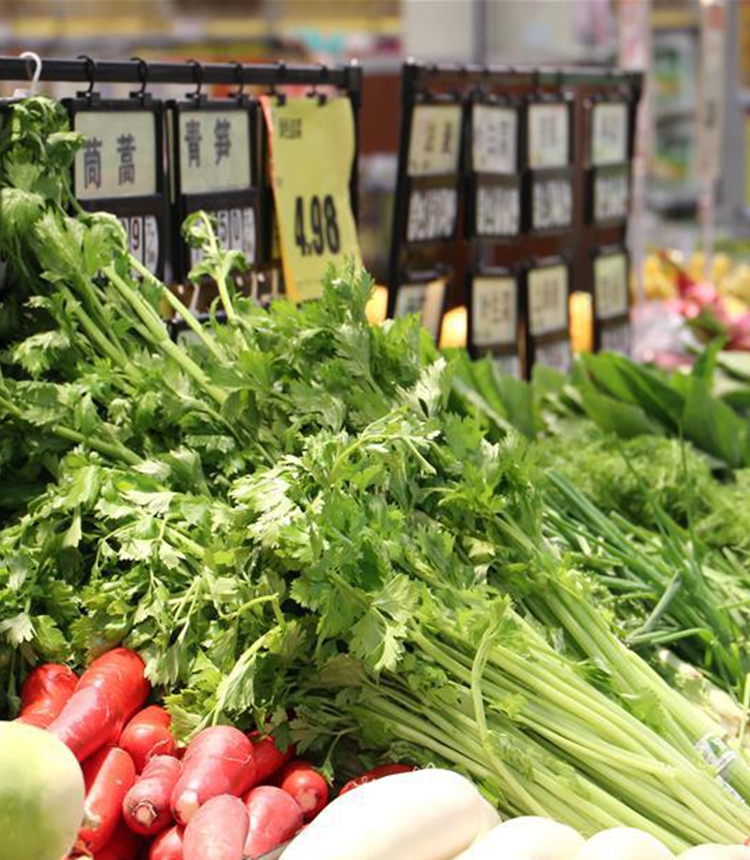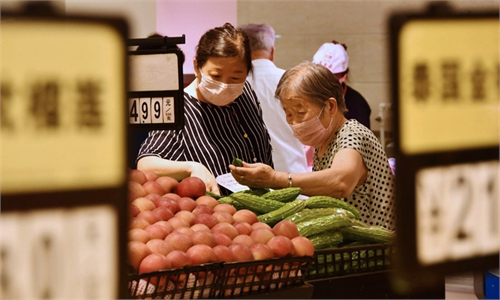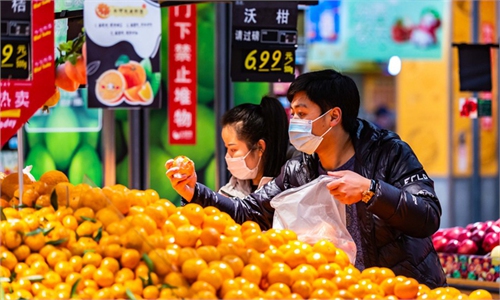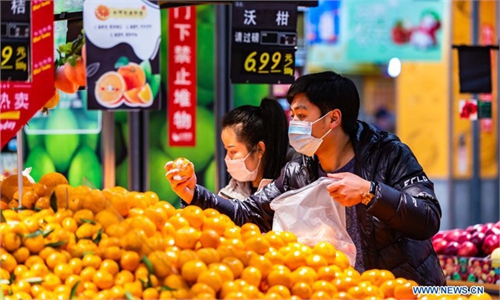
A citizen buys vegetables at a supermarket in Handan City, north China's Hebei Province, Jan. 9, 2020. China's consumer price index (CPI), a main gauge of inflation, rose 2.9 percent year on year in 2019, within government target of 3 percent, official data showed Thursday. (Photo: Xinhua)
Growth in China's consumer price index (CPI), the main gauge of inflation, and the producer price index (PPI) picked up pace in October, official data showed on Wednesday. But analysts say growth will stabilize as official measures are underway.The CPI rose 1.5 percent year-on-year, expanding from a 0.7 percent increase in September, the National Bureau of Statistics (NBS) said on Wednesday.
Vegetable prices rose by 16.6 percent affected by rainy weather, sporadic COVID-19 flare-ups and increases in production and transportation costs, which pushed up the index, said senior NBS statistician Dong Lijuan.
Non-food prices, mainly energy products, rose by 0.4 percent, an increase of 0.2 percentage points from the previous month, pushing the CPI up about 0.35 percentage points.
Earlier this month, China's Ministry of Commerce issued a notice, asking local authorities to take measures to ensure the supplies and stabilize the prices of vegetables during the coming winter and spring season, following reports of soaring vegetable prices.
The National Development and Reform Commission, China's top economic planner, also said that it took multiple measures to stabilize vegetable prices after floods. Production is to be restored with fast-growing vegetables, and the production and transportation of vegetables in cities hit by COVID-19 will be better coordinated.
"The CPI's 0.8-percentage point rise on a monthly basis beat expectations," Tian Yun, vice director of the Beijing Economic Operation Association, told the Global Times on Wednesday.
Tian said that the CPI might surpass 2 percent in the two remaining months of the year, "but the full year's CPI rise will be within 2 percent on a yearly basis."
China has set a 2021 CPI growth target of around 3 percent, "which has left enough room," he added.
Factory-gate inflation also continued to surge in October, hitting a record high on soaring prices of bulk commodities amid global supply shortages.
The PPI climbed 13.5 percent from a year earlier in October, faster than the 10.7 percent increase in September, according to NBS data.
The rise, which also beat expectations, might fall slightly on a month-on-month basis in the remaining two months of the year, but it is expected to maintain double-digit growth year-on-year, Tian said.
"Affected by the combination of international import factors and tight domestic supplies of major energy sources and raw materials, the increase in PPI was larger," Dong said.
Prices rose in 36 of 40 industrial sectors last month, the same as September, data showed. Prices in the mining and coal sectors jumped 103.7 percent year-on-year, up from September's 74.9 percent rise.



